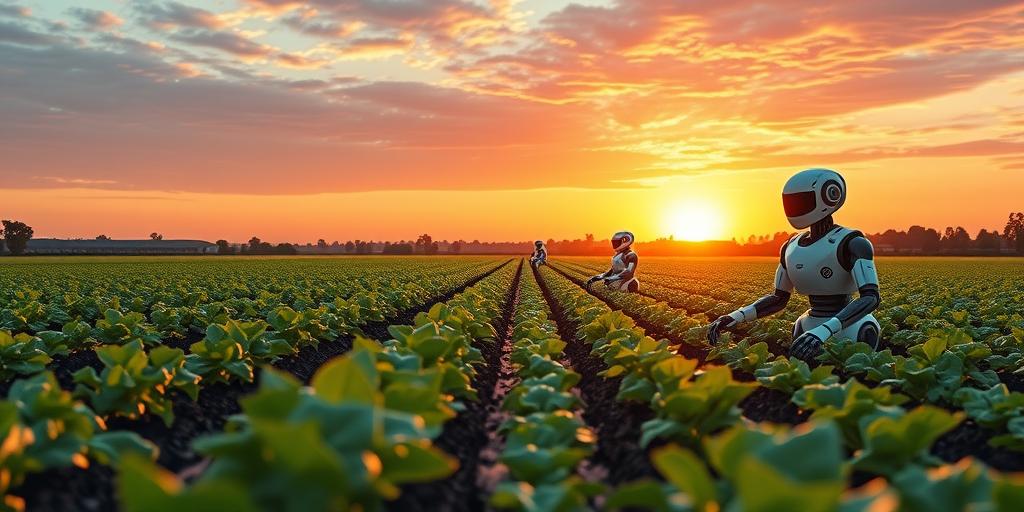The Role of Robotics in Agriculture: Precision Farming 2025
Agriculture is undergoing a technological revolution, and robotics is at the forefront of this transformation. As we look toward 2025, the integration of robotics into farming practices, often referred to as precision farming, promises to reshape how food is produced, managed, and distributed. This article explores the multifaceted role of robotics in agriculture, examining its benefits, challenges, and future implications.
What is Precision Farming?
Precision farming leverages technology to optimize agricultural processes. It involves using data-driven insights to make informed decisions about planting, irrigation, fertilization, and harvesting. Robotics plays a crucial role in precision farming by automating tasks, collecting data, and executing actions with greater accuracy and efficiency than traditional methods.
Key Applications of Robotics in Agriculture
- Automated Planting and Seeding: Robots equipped with GPS and sensors can precisely plant seeds at optimal depths and spacing, ensuring uniform growth and maximizing yields.
- Weeding and Pest Control: Robotic weeders use computer vision to identify and remove weeds without the need for herbicides. Similarly, drones and ground-based robots can detect and target pests, reducing the use of pesticides.
- Crop Monitoring: Drones and sensors provide real-time data on crop health, soil conditions, and environmental factors. This information enables farmers to make timely adjustments to irrigation and fertilization, optimizing resource use.
- Harvesting: Robots can harvest crops with greater speed and accuracy than human labor. They can also handle delicate produce with care, reducing damage and waste.
- Livestock Management: Robots can automate tasks such as feeding, monitoring animal health, and cleaning livestock facilities, improving efficiency and animal welfare.
Benefits of Robotics in Agriculture
- Increased Efficiency: Robots can work around the clock, increasing productivity and reducing labor costs.
- Improved Precision: Robots can perform tasks with greater accuracy than humans, optimizing resource use and minimizing waste.
- Reduced Environmental Impact: By reducing the use of pesticides and herbicides, robotics can help protect the environment and promote sustainable farming practices.
- Enhanced Crop Quality: Precision farming techniques result in more uniform and higher-quality crops.
- Better Resource Management: Data-driven insights enable farmers to make informed decisions about irrigation, fertilization, and other resource inputs.
Challenges and Considerations
While the potential benefits of robotics in agriculture are significant, there are also challenges to consider:
- High Initial Investment: The cost of purchasing and maintaining robotic equipment can be prohibitive for some farmers.
- Technical Expertise: Operating and maintaining robots requires specialized knowledge and skills.
- Data Security: The use of data-driven technologies raises concerns about data privacy and security.
- Job Displacement: The automation of agricultural tasks may lead to job losses for farmworkers.
The Future of Robotics in Agriculture
Looking ahead to 2025, the role of robotics in agriculture is expected to expand significantly. Advances in artificial intelligence, machine learning, and sensor technology will drive further innovation and automation. We can anticipate seeing more sophisticated robots that can perform a wider range of tasks with greater autonomy. Additionally, the integration of robotics with other technologies, such as the Internet of Things (IoT) and blockchain, will create new opportunities for optimizing agricultural supply chains and improving food traceability.
Conclusion
Robotics is poised to play a transformative role in agriculture, enabling farmers to produce more food with fewer resources and less environmental impact. As we move closer to 2025, it is essential to address the challenges and considerations associated with the adoption of robotics to ensure that its benefits are realized in a sustainable and equitable manner. By embracing innovation and investing in research and development, we can unlock the full potential of robotics to create a more efficient, resilient, and sustainable agricultural system.
